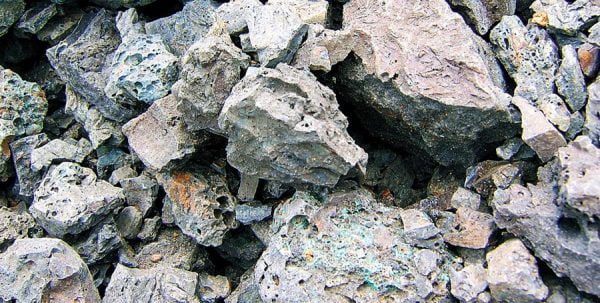Zimbabwe has banned the export of raw chrome ore and concentrates to push for local refining. It’s not the first time, and the question is whether this old play will bring new results.
Chrome producers are banned immediately from exporting raw chrome, while producers of chrome concentrates have a year to set up local refinery capacity, Information Minister Monica Mutsvangwa said after Tuesday’s Cabinet meeting.
“Unless chrome mining capacity is expanded, the smelting operations could soon face the challenge of insufficient feedstock in the form of chrome ore. In light of the need to safeguard the needs of the ferrochrome industry, Cabinet approved a total ban on exports of raw chrome ore with immediate effect. The ban will capacitate current smelters and maximise the value chain to be realised from the country’s abundant resources,” Mutsvangwa said.
“Cabinet approved the total ban on chrome concentrates with effect from July 2022. This gives producers of chrome concentrates a year within which to make a suitable arrangement for the value addition of the concentrates, and the investment of which is low-capital costs and relatively easy.”
Exports of raw chrome would only be allowed when all the smelters are not able to take up the consignment, said Mutsvangwa.

Chrome ban: A new, old plan
There have been similar bans in the past.
In 2007, chrome exports were banned in an effort to push for beneficiation. It didn’t work, as Government lifted the ban and levied a 20% Export Tax in 2009.
Another ban was announced in 2011. Again, in 2015, government reversed its move. The Ministry of Mines admitted that the ban had not, as planned, resulted in increased local processing. Instead, it had hit small chrome miners, who found themselves with stocks of chrome ore that they could not sell.
The ban also contributed to a sharp dip in foreign currency inflows.
The ban’s failure to boost local refining was, the Ministry of Mines said in 2015, because of a lack of efficient and modern technology for processing chrome. Power tariffs, a major cost for processors, were too high. Government then ordered power utility ZESA to sell electricity to the industry at lower tariffs.
It appears government now believes there has been enough processing investment to warrant yet another try.
But the true test of this strategy will be seen in whether local smelters will be able to absorb the chrome ore being mined around the country, and to process it efficiently.
At the time of the last ban, in 2015, chrome ore production was 1.5 million tonnes per year. This was at par with output projections for this year. Zimbabwe produced 1.2 million tonnes of chrome last year. Production was 300 926 in the first quarter of this year, down from 311 495 tonnes over the same period this year.
That drop, according to the Ministry of Finance, was because there was low intake of raw chrome by local processors. It was also due to low demand for high carbon ferrochrome from China, the world’s biggest buyer.
“In response, most local smelters closed operations but took advantage of this period to refurbish and modernise their furnaces in anticipation of the resumption of trade,” the Ministry says in its latest mid-term budget statement.
In 2015, government lifted the ban because world ferrochrome prices had collapsed. Last year, prices fell to below those 2015 levels, hit by COVID-19. This forced many local smelters to go into care-and-maintenance. Prices have since recovered in 2021, although uncertainty remains over demand.

The country now has 22 smelters, but smelting capacity across much of the industry remains limited.
Before the 2015 ban, Zimasco, part of China’s Sinosteel, produced 70% of Zimbabwe’s ferrochrome. Afrochine, a unit of the world’s biggest stainless steel company Tshingshan, is now the largest producer, putting out 100 000 tonnes of ferrochrome from its Selous plant each year.
ZimAlloys, which has just emerged from judicial management and is reinvesting in its smelters in Gweru, is also a potentially key producer.
China imported 141,184 tonnes of chrome ore from Zimbabwe between January and March, roughly half the country’s production during that period and up by 36.4% from last year. Alloy shipments rose by 9.6% to 27,632 tonnes.
Chrome investment
The latest ban will be a knock on some new chrome investors.
Tharisa, the JSE-listed platinum and chrome producer, earlier this year acquired Salene Chrome Zimbabwe for US$3 million. Tharisa’s plan was to send chrome concentrates produced by Salene to Arxo Resources, Tharisa’s chrome arm in South Africa.
Other recent chrome investments include:
- Amazon Private Ltd was recently granted 21 Chrome Claims covering 1 545ha
- Best Trade granted 13 Chrome Claims (1,052.8ha)
- Jinan, 3 831ha of applications for Chrome Claims still being processed
- ZimAlloys’ A3 Furnace is 70% complete
- Afrochine granted 38 Chrome Claims (1,054.9ha)
- Monachrome, 1000ha granted for chrome mining for ferrochrome production
- Tsingshang was allocated iron ore claims for setting up a carbon steel plant
South Africa, which has 73% of the world’s chrome reserves, last October announced plans to impose an export tax on raw chrome.
.png)




